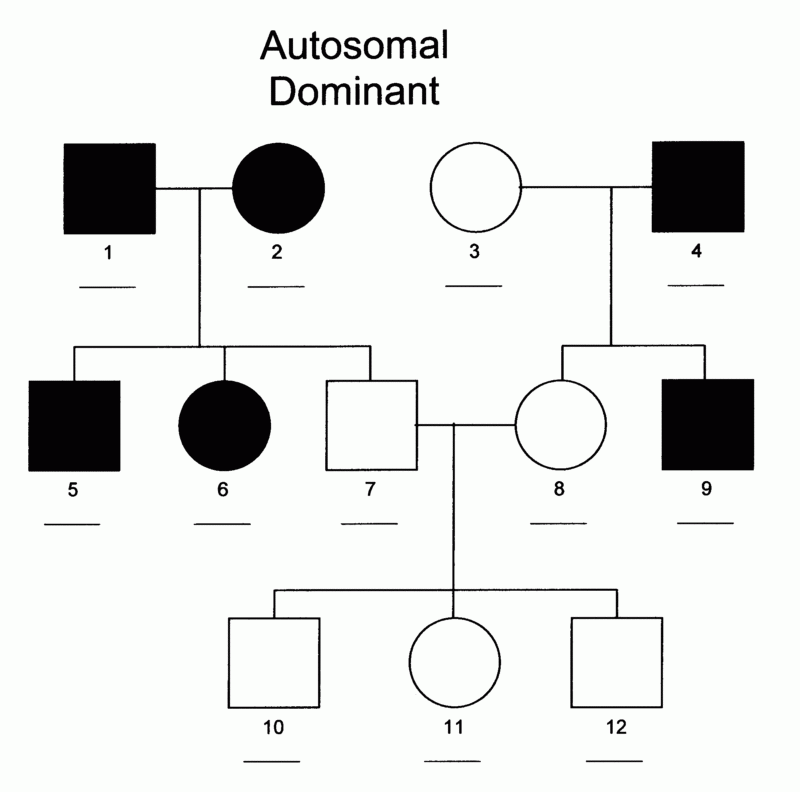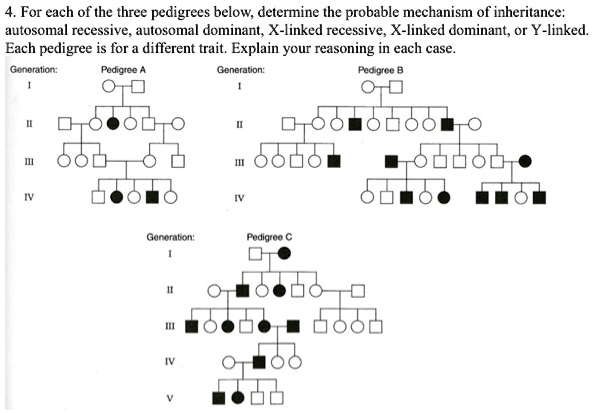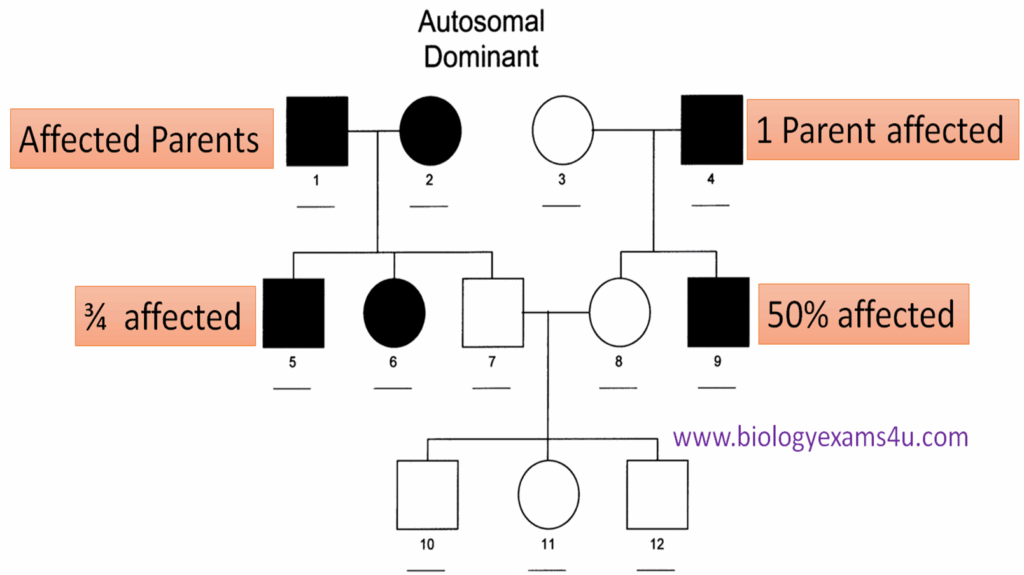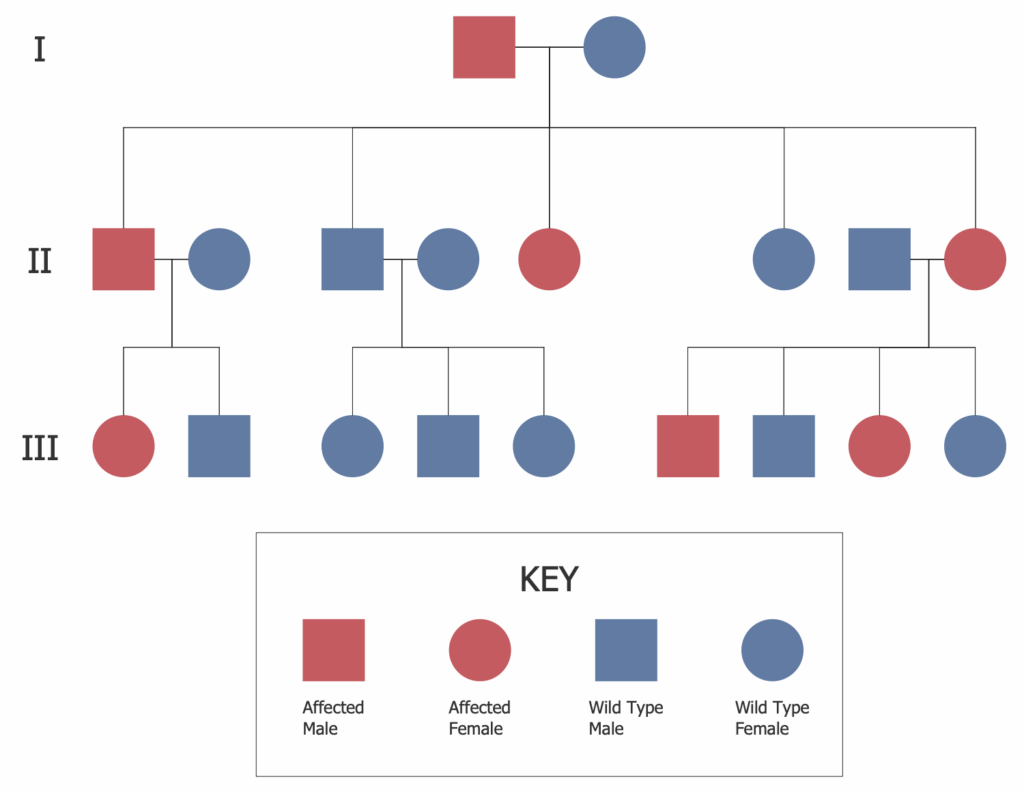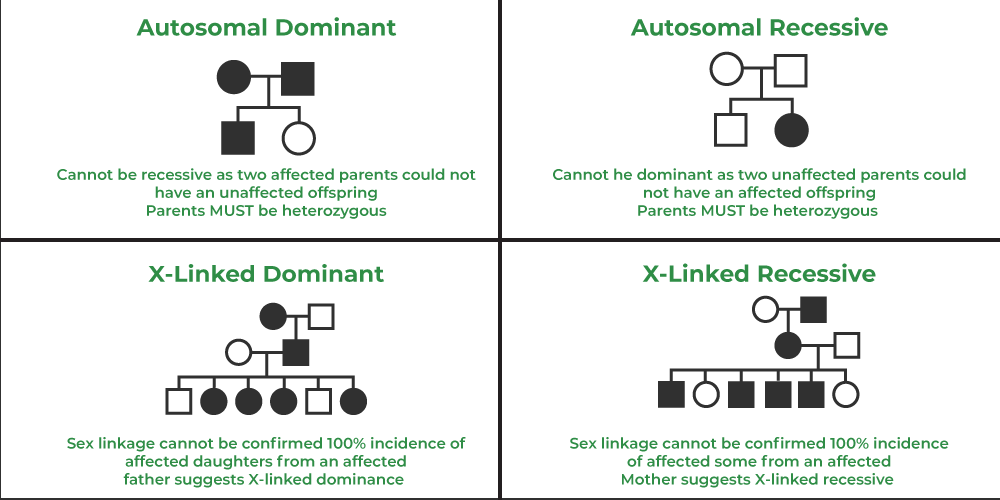When it comes to determining whether a genetic disorder is dominant or recessive, pedigree charts can be a valuable tool. These charts are visual representations of a family’s genetic history, showing how traits are passed down from one generation to the next. By analyzing the patterns on a pedigree chart, geneticists can determine whether a disorder is dominant or recessive.
One key feature of a pedigree chart is the use of symbols to represent different individuals in a family. Squares are used to represent males, while circles represent females. A shaded symbol indicates that an individual has the disorder in question, while a half-shaded symbol indicates that an individual is a carrier of the disorder. By tracing the pattern of inheritance through multiple generations, geneticists can determine whether the disorder is dominant or recessive.
Pedigree Chart Determining Whether The Disorder Is Dominant Or Recessive
Determining Dominant Disorders
In a pedigree chart, dominant disorders are typically indicated by the presence of the disorder in every generation. This means that individuals with the disorder will have at least one affected parent. Dominant disorders do not skip generations, as they only require one copy of the faulty gene to be expressed. If a disorder is dominant, we would expect to see a vertical pattern of inheritance on the pedigree chart, with affected individuals passing the disorder on to their children.
Common examples of dominant disorders include Huntington’s disease and Marfan syndrome. By studying the pedigree chart and identifying the pattern of inheritance, geneticists can confidently determine whether a disorder is dominant and provide appropriate genetic counseling and testing for at-risk individuals.
Determining Recessive Disorders
On the other hand, recessive disorders are typically indicated by the presence of the disorder in multiple generations, with unaffected parents producing affected offspring. Recessive disorders require two copies of the faulty gene to be expressed, one from each parent. This means that carriers of the gene may not show any symptoms of the disorder themselves.
Examples of recessive disorders include cystic fibrosis and sickle cell anemia. In a pedigree chart, recessive disorders are often seen as horizontal patterns of inheritance, with affected individuals appearing sporadically throughout the family tree. By carefully analyzing the pedigree chart and identifying these patterns, geneticists can determine whether a disorder is recessive and provide appropriate genetic counseling and testing for carriers.
By utilizing pedigree charts and understanding the patterns of inheritance for dominant and recessive disorders, geneticists can provide valuable insights into the genetic risks faced by individuals and families. This information can guide decision-making around family planning, genetic testing, and medical management, ultimately leading to better health outcomes for those affected by genetic disorders.
Download Pedigree Chart Determining Whether The Disorder Is Dominant Or Recessive
For Each Of The Three Pedigrees Below Determine The Probable Mechanism
In Pedigree Charts Autosomal Dominant Disorders Typically
Family Tree Solution ConceptDraw
How To Read A Pedigree Chart Dominant Or Recessive Free Worksheets
